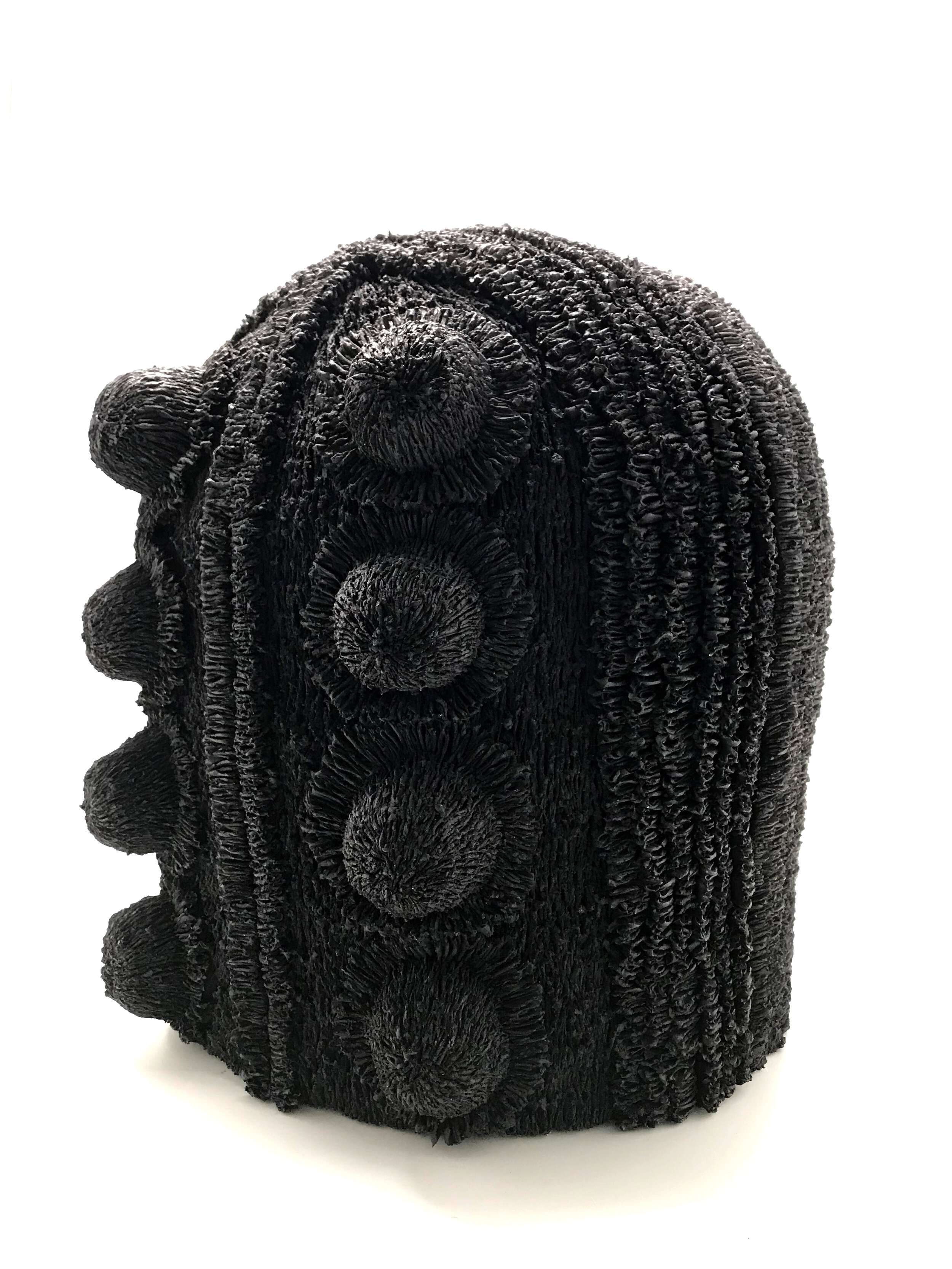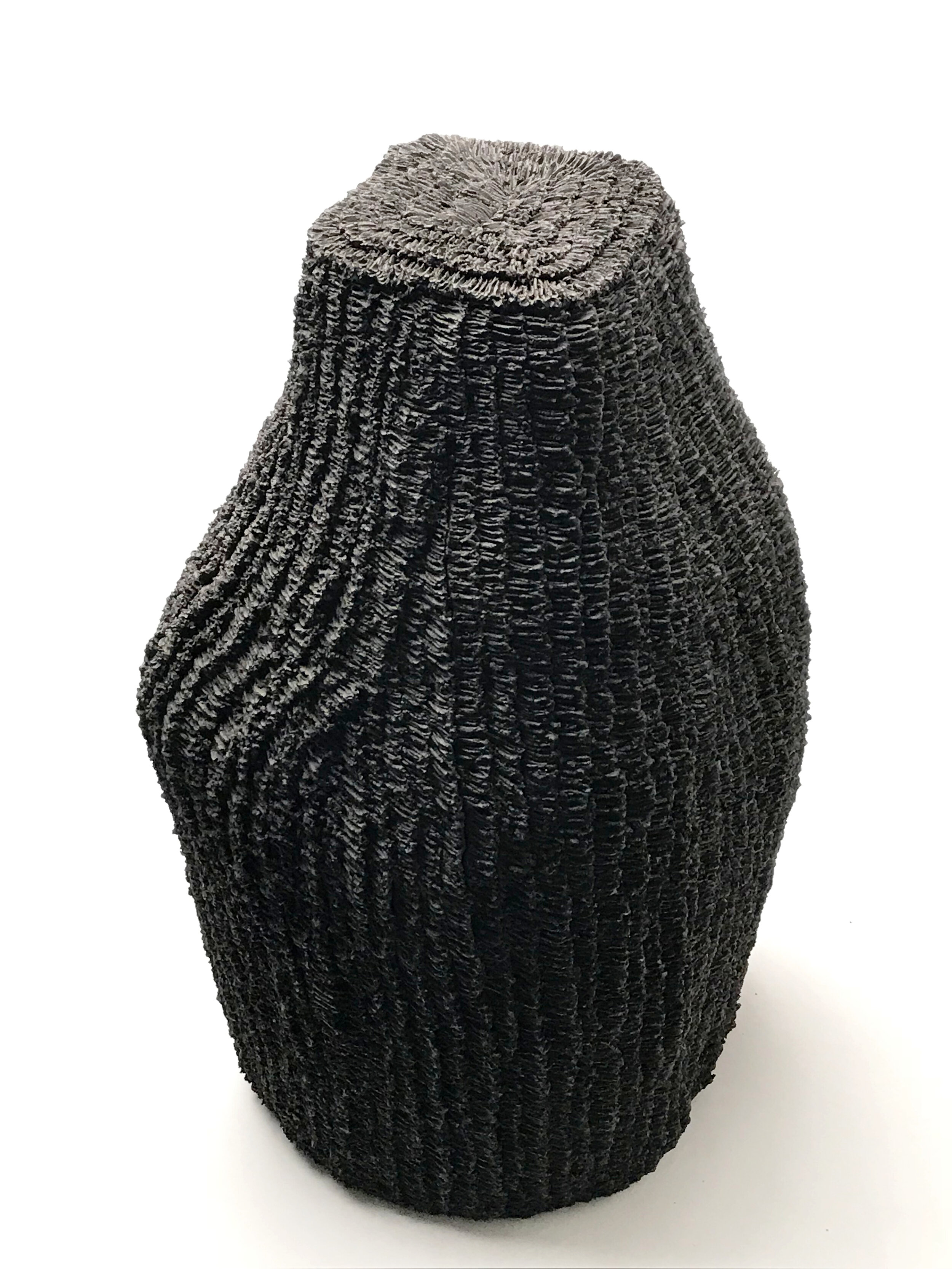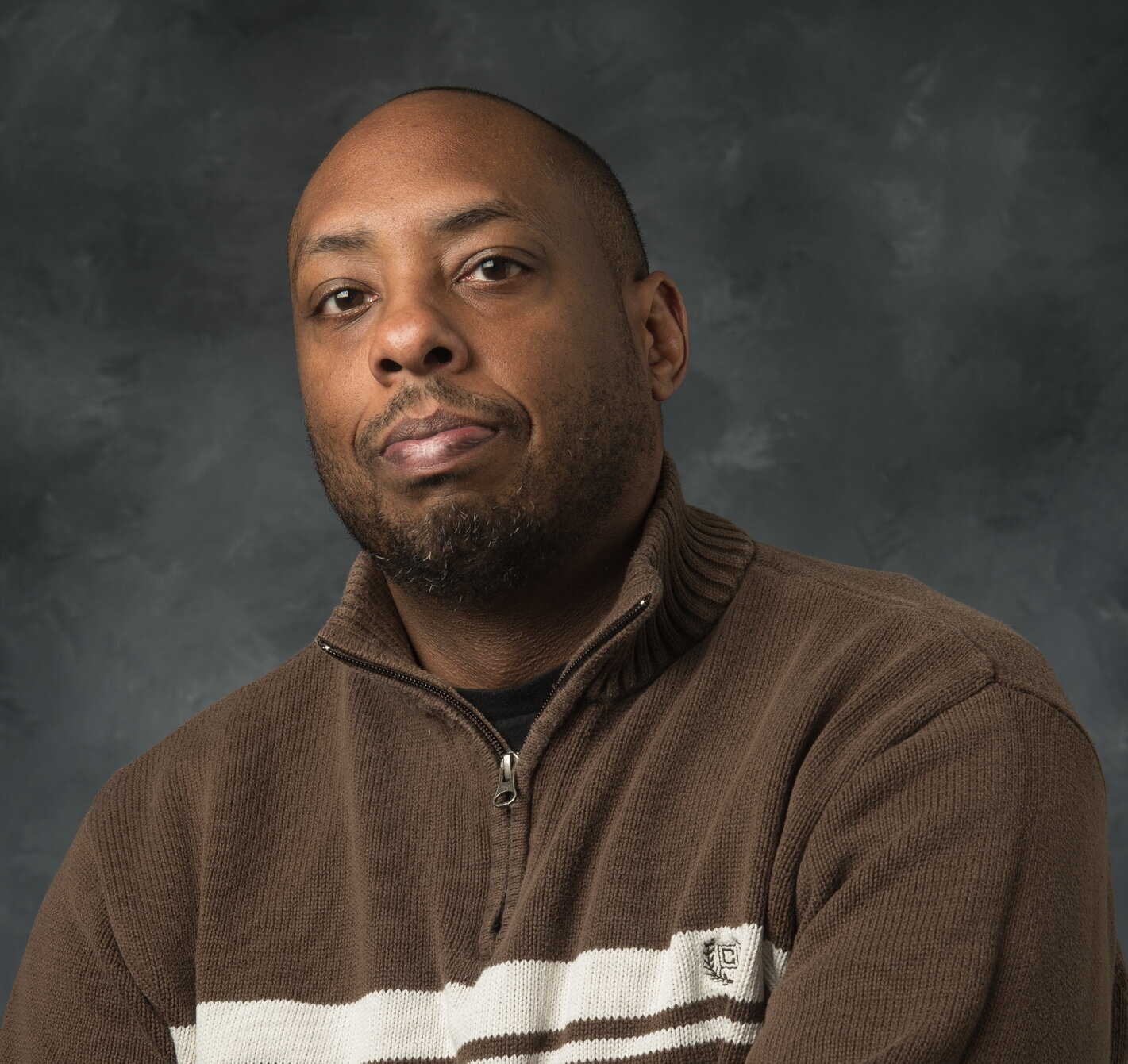Donté K. Hayes
Donté K. Hayes graduated summa cum laude from Kennesaw State University at Kennesaw, Georgia with a BFA in Ceramics and Printmaking with an Art History minor. Hayes received his MA and MFA with honors from the University of Iowa and is the 2017 recipient of the University of Iowa Arts Fellowship. Recent art exhibitions include group shows at the Museum of Science + Industry in Chicago, Illinois, the Association of Visual Arts in Chattanooga, Tennessee, and the Museum of Contemporary Art of Georgia in Atlanta. Donté’s artwork has been presented at the 1-54 art fair in London, England, and at Design Miami in Florida. He has also been included in recent juried exhibitions from the 2019 NCECA Student Juried Show, and the 2018 River to River Midwest Regional Ceramic Juried Show at Coe College in Cedar Rapids, Iowa. Hayes is a 2019 Ceramics Monthly Magazine Emerging Artists and Artaxis Fellow. Donté is the 2019 winner of the Society 1858 Prize for Contemporary Southern Art from the Gibbes Museum of Art in Charleston, South Carolina. Donté K. Hayes is represented by Mindy Solomon Gallery in Miami, Florida.
Statement
My research and artwork are focused on the pineapple as a symbol that represents welcoming and hospitality, while also examining issues of access to food, empire, and what constitutes the feeling and or act of being welcomed. Through this research, I have discovered that the tradition of the pineapple as a symbol for hospitality is rooted in slavery and agricultural colonization of South America, the Caribbean, and the Southern United States, in particular, South Carolina and my home state of Georgia. When a new slave ship bringing enslaved Africans docked at a port, the foremen would place a pineapple at the front of the dock to notify a new shipment of enslaved Africans has arrived. This creating the pineapple as a symbol for welcoming. The investigation in the concept of welcoming is also from personal struggles in moving through public spaces and environments and not feeling like I belonged or welcomed. These ceramic objects are vessels, each making symbolic allusions to the black body. The human desire to find a place to belong and call home is universal.
Portrait of Donté K. Hayes
Interview with Donté K. Hayes
Questions by Andreana Donahue
Can you tell us a bit about your background and where you grew up? In what ways have your early visual experiences and personal history led to art-making?
I grew up in the suburbs of Baltimore, Maryland in the 80’s and early 90’s. However, I moved to Atlanta in 1993, where I lived most my life. My Mom named me Donté, because she thought I would be an artist. So perhaps I was destined to be an artist because of my Mom’s encouraging my creative endeavors at an early age. I learned how to draw through watching Saturday morning cartoons and reading comic books. I was a fan of Black Panther way before the movie. I collected comic book titles, Black Panther, Avengers, X-Men, Spider-Man, and X-factor. Reading Black Panther, and seeing a hero that looked like me and wasn’t weak or stereotypical embolden me. I wanted to learn about my history and inspired me to create my own super heroes and comic books. I created Black heroes with superhuman powers, intelligence, and superior knowledge of futuristic technology which used their powers to liberate the black community. In the summer, when most families went to amusements parks, my family visited art and history museums, and historic sites, like Mount Vernon, Gettysburg, Pennsylvania, and Williamsburg, Virginia. When I was young, my siblings and I would complain during summer vacation. We wished we could be a normal family and go to fun places like Disney World or Six Flags instead of going to a boring museum. I am so thankful that I was exposed to museums and history at an early age. Now, as an adult I have a strong positive foundation of self because of the experiences I had growing up. The artwork I create comes from all of these experiences that I had when I was younger.
Where are you currently based and what initially attracted you to working in this community? Are there any aspects of this place that have surfaced in your work?
I recently graduated with my MFA from the University of Iowa. Since graduating from Iowa, I have been in transition. I spend my time based in Georgia and now New Jersey. I’ve lived most my life in the Atlanta Metro area. However, I recently moved to New Jersey to be with my partner and wife Kelly Murphy. Kelly is an amazing artist and is a high school art teacher in New Jersey. I moved for love and there is nothing more powerful than finding your soulmate. Currently I’m working on creating a studio space in New Jersey.
Aboundance, 2019. Ceramic, 18 × 15 × 15 inches.
Can you tell us about your studio and what a typical day is like for you? Do you share space or ideas with other artists while working, or is it a more solitary routine?
Currently, I am in a transitional phase in my art practice. However, most recently my studio space at the University of Iowa was a communal space of myself and five other artists all working in ceramics. The studio became our safe space. The studio was more of a sanctuary for each of us to be ourselves as a collective and as individual artists. We all listened to the same music, watched the same movies, and television shows while making work in the space. We vibed off each other’s concepts, experiences, and use of materials. However, we each had our own distinct style. I enjoyed working in a studio where you could get an immediate critique or acknowledgement on what you’re thinking about or making at any given day.
What criteria do you follow for selecting materials? Do you prefer to maintain a narrow focus or work across diverse media? How do you navigate the limitations and possibilities that result from this path?
All of my artwork is based on research and not a specific medium. I first allow the research and content to dictate what will best support the conceptual themes I will like to illuminate in the artwork. I never want to force a concept to be created in a medium just because I’m more comfortable with a specific medium. Through this thought process I am never pigeonholed to the limitations of the material I’m using.
Can you walk us through your overall process? How would you describe your approach to manipulating materials? What about decision-making and editing?
When working with clay, I allow the making of the form be intuitive. I never draw or preplan the form before making the work. I usually, listen to hip hop music or I'm listening to a movie that I have previously seen multiple times playing in the background, like Star Wars, Star Trek, and Harry Potter. My own personal thoughts and interest combined with the research I’m investigating is what I’m thinking about while creating. The process of making a form is something that is fun, fast and without any judgements. I don’t worry about being perfect or right. At this stage of the creative process, it is not about editing. It is only about how the form makes me feel. Once the form feels right, is when I begin to make decisions. This is when the creative process deliberately slows down. I use my hands to manipulate and deconstruct the form. Once I’m satisfied with how the form moves around in space I begin to create the surface. I use a regular ceramic needle tool to scratch or create marks on the surface of the clay. Similar to the mark making when etching a copper plate in printmaking. I let the music or sounds I'm listening to dictate the length and repetition of the markings on the surface of the clay. The ritual in the repetition of marks induces me to a transcendental state. My consciousness moves through time and space, past, present, and future become one when creating the sculpture. The marks become a texture or cover for the work.
Withstand, 2019. Ceramic, 21 × 13.5 × 7.25 inches.
Can you talk about some of the ongoing interests, imagery, and concepts that have informed your process and body of work over time? How do you anticipate your work progressing in the future?
The ongoing themes and imagery in my work all deal with researching the pineapple as a symbol for welcoming and hospitality. The investigation in the rituals and the action of being welcomed or hospitable to others is from my own experiences. I have encountered many struggles in negotiating public spaces as black man and person of color. Through this inquiry, the tradition of the pineapple as a symbol for hospitality is rooted in slavery and agricultural colonization of South America, the Caribbean, and the Southern United States, in particular, South Carolina and my home state of Georgia. When a new slave ship bringing enslaved Africans docked at the port, the foremen would place a pineapple at the front of the dock to notify a new shipment of enslaved Africans has arrived. This creating the pineapple as a symbol for welcoming. From this research my art practice pulls from my interest in hip-hop culture, history, and science fiction. The artwork references the visual traditions from the Southern United States, the Carribbean, South America, and the African Diaspora. I anticipate my work progressing in exploring the patterns and textiles found in traditional African rituals and how these rituals connect the African Diaspora.
Do you pursue any collaborations, projects, or careers in addition to your studio practice? If so, are there connections between the two?
During my time in grad school, myself and my fellow grad cohort in the ceramic department worked collaboratively and founded an art collective, titled, The Collective. I also am always looking to show with other artists with similar conceptual ideas. The Collective, also have worked collaboratively on projects outside of the gallery space.
As a result of the pandemic, many artists have experienced limited access to their studios or loss of exhibitions, income, or other opportunities. Has your way of working (or not working) shifted significantly during this time? Are there unexpected insights or particular challenges you’ve experienced?
During the height of the pandemic in March, I was in the final stages of creating work for my thesis show at the University of Iowa. My show was scheduled for the following month. Due to the pandemic the school closed all access to the facilities and studios. All of the thesis shows were also canceled. I didn’t even get back into my studio until early June. I graduated with my MFA without having an exhibition. When I finally received access to my studio it was only enough time for me to clean out my belongings and move out. Also, the residencies that I was scheduled to attend were also canceled. So I haven’t made any new work since March. However, many of my scheduled shows have converted to virtual exhibitions and art fairs. Currently, I’m working on converting warehouse space for my new studio. Also, I’m fortunate to receive a residence at the Hambidge Art Center which is still scheduled in November. I have used this time for research and documenting finished work. The pandemic has caused many institutions to close their doors. Institutions are finding new ways to connect with their viewers and art enthusiasts. With the changing times, I have been invited by multiple colleges and universities to present virtual artist talks and lectures about my research, work, and process.
Donté Hayes in the studio.
In a time that seems to be marked by uncertainty, collective anxiety, and increasing social unrest, why do you think the perspectives and contributions of artists remain meaningful? Do you feel a natural relationship exists between your work (or the role artists play more broadly) and confronting established systems - of power, cultural institutions, or otherwise?
Art during these uncertain times is bringing powerful context and critical commentary to the times we’re living in. As a black man and an artist I have a duty and a natural relationship to discuss how I see the world and how the world views me. For too long white supremacy has silenced and quieted black, brown and people of color voices to speak our own truth and experience. Art is a beacon to feel and see the humanity in me. My black body should not mean something to society only in death. I use my artwork to suggest the past, discuss the present, and explore possible futures interconnected to the African Diaspora. While also examining deeper social issues that broaden the conversation between all of humanity.
Can you share some of your recent influences? Are there specific works - from visual art, literature, film, or music - that are important to you?
I seem to get many of my influences from pop culture. I want my work to relate in a multiple ways of seeing and thinking. Recent influences in my work and concepts that I have been thinking a lot about, is the duality of a utopian versus a dystopian world. I have been binge watching television shows, Watchmen, The Boys, and Star Trek: Discovery and listening to the music from the hip-hop group, Cunninlynguist.
Who are some contemporary artists you’re excited about? What are the best exhibitions you’ve seen in recent memory?
Some of the contemporary artists I’m excited about are Delita Martin, Bisa Butler, Sharif Farrag, Eddy Kamuanga IIunga, Ebony Russell. The best exhibition I have seen in recent memory is the two solo shows by Derrick Adams at the Hudson River Museum of Art titled, Buoyant and We Came to Party and Plan.
What are you working in the studio right now? What’s coming up next for you?
Right now I have been working on setting up my studio. In November I will be in residence at Hambidge Center in North Georgia and in January I will be in residence at Township 10 in North Carolina. I will be showing work in the upcoming Design Miami with Mindy Solomon gallery. Lastly, I will be showing work in the 2021 Atlanta Biennial curated by Dr. Jordan Amirkhani at the Atlanta Contemporary.







